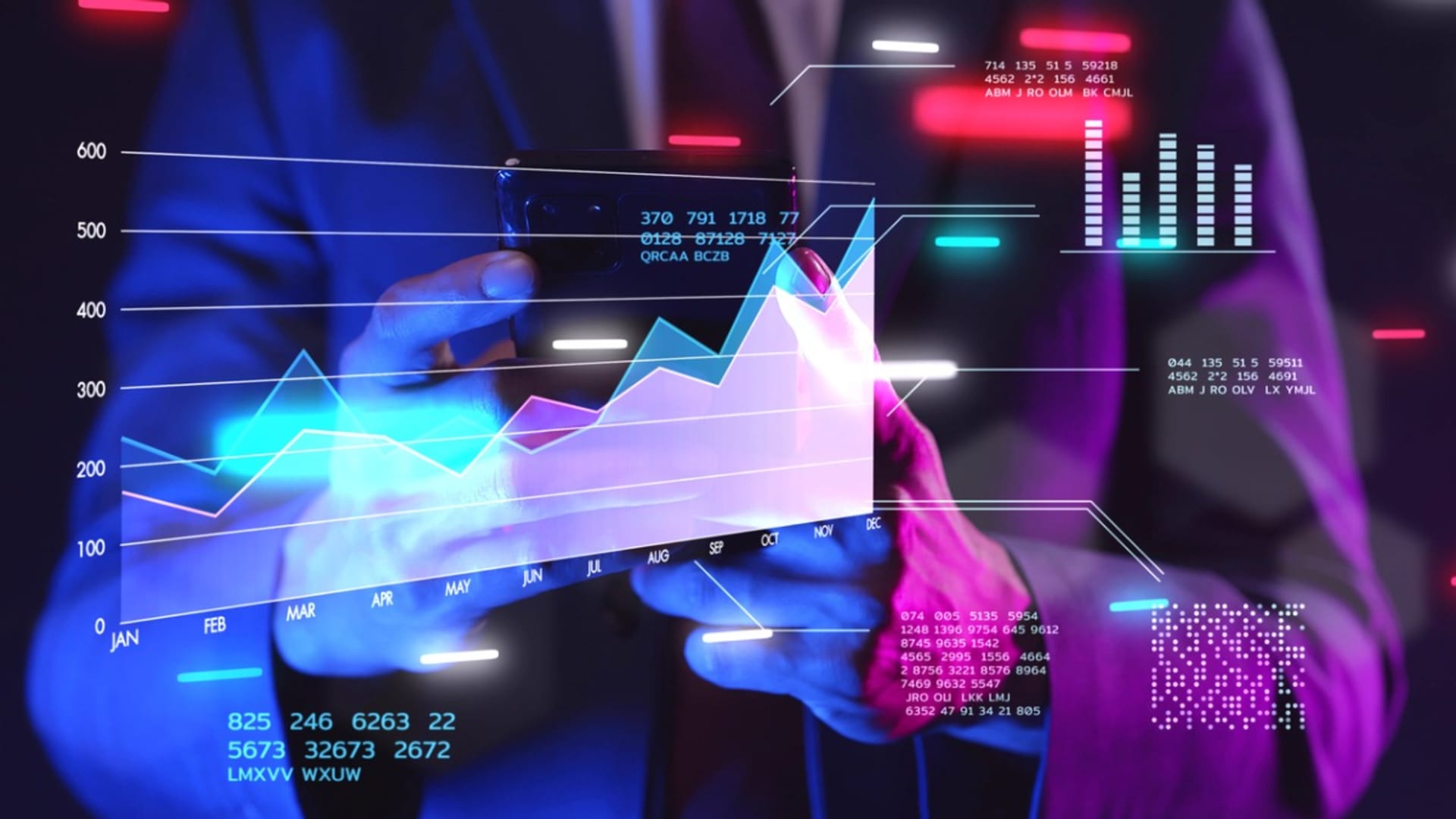Data Science Services
Gather business insights and stay competitive with our data science services. Work with the top 1% of tech talent, onboarded within 2-3 weeks.
500+ companies rely on our top 1% tech talent.
Data Science Services We Provide
1. Predictive Analytics
Analyze historical data to forecast future outcomes and trends. Predictive analytics help stakeholders make informed business decisions and develop proactive strategies. Real-life applications include anything from credit scoring to forecasting disease outbreaks.
We utilize tools and frameworks such as Python's Scikit-learn, R, and TensorFlow to craft and refine predictive models.
2. Machine Learning
What do self-driving cars, Alexa, and Netflix’s recommendation engine have in common? They all rely on machine learning.
Machine learning is a key component of data science. It allows computers to learn from data and make smart decisions. This technology can handle routine tasks, predict trends, and offer intelligent insights. Our engineers use the latest tools and frameworks like TensorFlow, Keras, and PyTorch to implement ML solutions.
3. Natural Language Processing
Natural Language Processing (NLP) enables machines to understand, interpret, and generate human language. For example, it's often used in chatbots and virtual assistants. Businesses also leverage NLP to build applications like GPT-4 or text-to-speech software.
We use libraries such as NLTK, SpaCy, and the Transformers library from Hugging Face for our NLP tasks.
4. Data Visualization
Transform complex data into intuitive, interactive visuals. Glean insights, identify trends, and make better data-driven decisions. Social media analytics tools like Hootsuite or charting platforms like TradingView are great examples of data visualization at work.
We create compelling visuals, dashboards, and reports using tools and frameworks like Matplotlib, Seaborn, and Google Visualization API.
5. Data Pipelines
Data pipelines streamline the process of collecting, transforming, and storing data for analysis or further processing. For example, a retail chain might use data pipelines to analyze customer behavior and purchase history and optimize inventory management.
To design and manage these pipelines, we employ tools and frameworks such as Apache Kafka, Apache NiFi, and Apache Airflow.
6. Business Intelligence (BI)
Harness your data and get actionable, real-time insights. Make more informed business decisions about your staff, customers, finances, and more. BI is used for anything from risk management to quality control.
We use BI platforms and tools like Power BI, Tableau, and QlikView to analyze, visualize, and uncover useful insights.
Kinesso case study

Key Facts about Data Science Services
Best Practices for Data Science
Ensure all data used is valid, accurate, and consistent. Incorporate continuous data validation techniques during deployment to account for changes over time.
Implement strategies like imputation or deletion to manage missing data efficiently.
Leverage cloud platforms for scalable and flexible data storage and processing.
Ensure efficient data flow from ingestion to processing and visualization.
Choose algorithms suited to the problem type and data characteristics. Also, consider computational complexity and algorithm interpretability during the selection process.
Leverage standalone metrics and visual evaluation methods to assess model performance.
Monitor the model performance. Focus on the inputs and outputs, ensuring no significant deviation that might indicate issues with data quality or model drift.
Implement systems to automatically retrain models with fresh data. Monitor and validate the model post-retraining in case the new data has degraded performance.
Employ version control systems to manage code and model versions efficiently.
Leverage platforms that enhance collaboration among team members.
Use workflow management tools to automate and streamline data science processes.
Maintain thorough and clear documentation for models, codes, and experiments to ensure reproducibility and knowledge sharing.
Implement techniques such as nullification, equalization, and reweighing to identify and minimize biases in data and models. Bias detection tools like IBM’s AI Fairness 360 can also help.
Ensure that model decisions can be explained to and understood by stakeholders.
Make sure your data storage, transfer, and access management comply with local and international data protection regulations.
Maintain transparent and auditable processes to comply with regulatory and organizational standards.
Why Choose BairesDev for Data Science Services

Tailored Solutions
Our custom data science solutions will give you a competitive edge. Uncover hidden opportunities, streamline operations, and make more informed business decisions.
Top 1% of Tech Talent
We only hire the top 1% of tech talent across LATAM. Our 4,000+ specialists are proficient in 100+ technologies. On average, they have 10 years of experience, spanning hundreds of industry sectors.
Nearshore Specialists
Our nearshore specialists work roughly the same hours as US companies. We vet all candidates for English proficiency. Work with skilled communicators and problem-solvers who will shed valuable insights into your business processes.
Our process. Simple, seamless, streamlined.
During our initial discussion, we'll cover your business goals, budget, and timeline. This information helps us determine whether you’ll need a dedicated software development team or one of our other engagement models, including staff augmentation or end-to-end software outsourcing.
Depending on your chosen engagement model, we’ll provide you with senior data scientists or a complete software development team. Then, we’ll start onboarding the talent.
With the strategy in place and the team assembled, we'll start working. We’ll keep you updated on all milestones. Scale your engagement as your business needs evolve.
Frequently Asked Questions (FAQ)
What exactly is data science and how would it benefit my business?
Data science involves extracting insights from complex and unstructured data, using various statistical, mathematical, and programming techniques. For businesses, this translates into more informed decisions, enhanced business strategies, improved customer experiences, and more.
What is the role of a data scientist?
A data scientist takes your complex business challenges and formulates analytical solutions. They use data manipulation, statistical methods, and machine learning. By analyzing and interpreting complex datasets, they’ll help you make data-driven decisions. They can also provide actionable insights that are critical to your business strategies.
How secure is my enterprise data when outsourcing data science services?
Data security is paramount to our operations. We employ advanced security protocols, encryption techniques, and compliance practices to ensure your data is securely handled, processed, and stored, safeguarding it from unauthorized access and data breaches.
Can your data science service be customized to my business?
Yes, our data science team can build tailored solutions. Whether you're a startup, an SME, or a large enterprise, our robust data and analytics capabilities ensure the final solution aligns with your business objectives.
How do your data science services leverage AI?
Artificial intelligence (AI) complements data science by automating data analysis processes, enabling more rapid and useful insights. AI learns from your data and improves data analysis by making predictions, recognizing patterns, and enhancing decision-making.
How Businesses Can Overcome the Software Development Shortage
BairesDev Ranked as one of the Fastest-Growing Companies in the US by Inc. 5000

See how we can help.Schedule a Call










